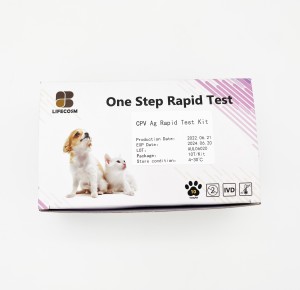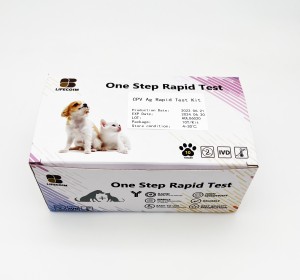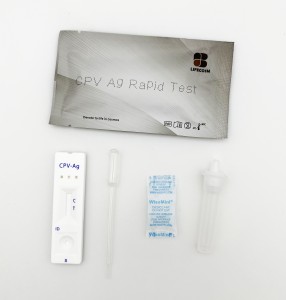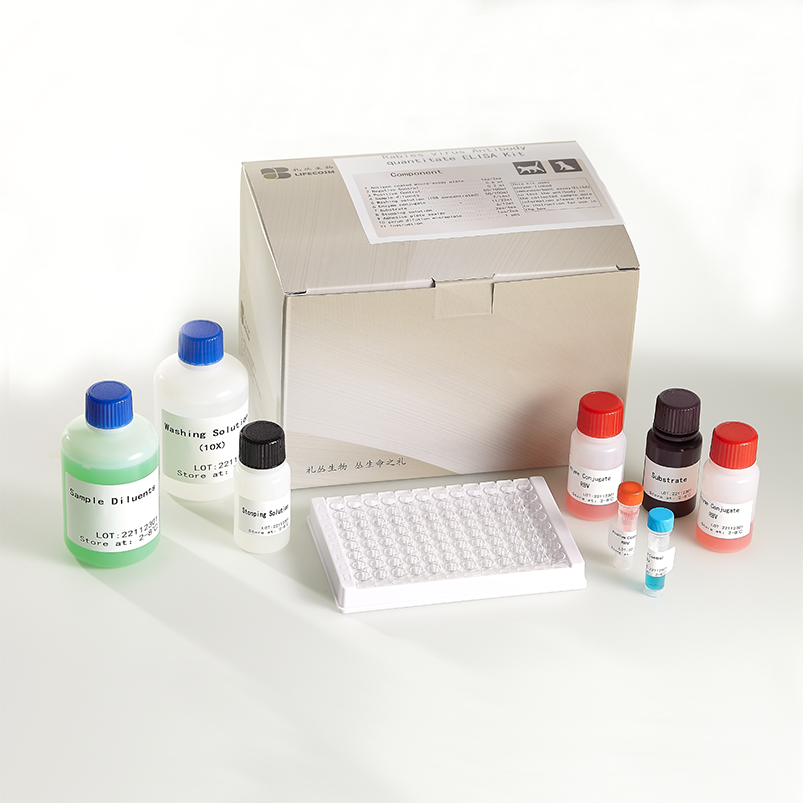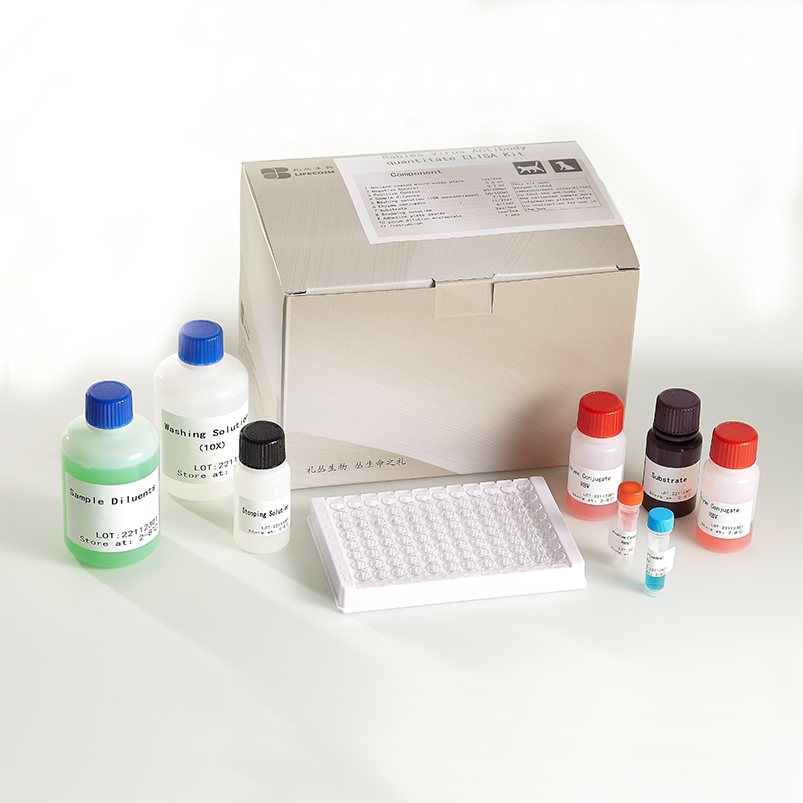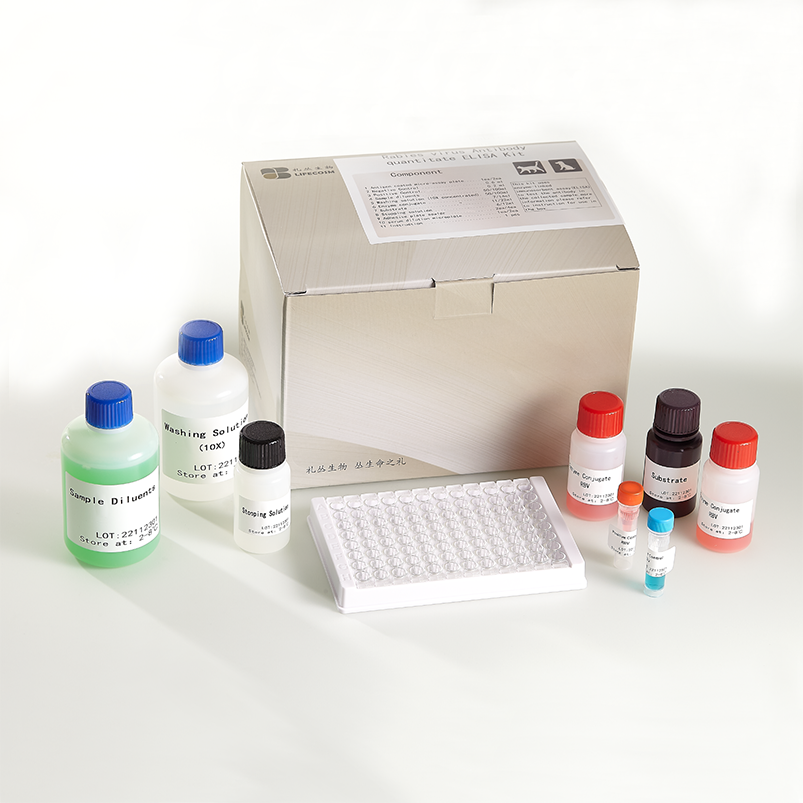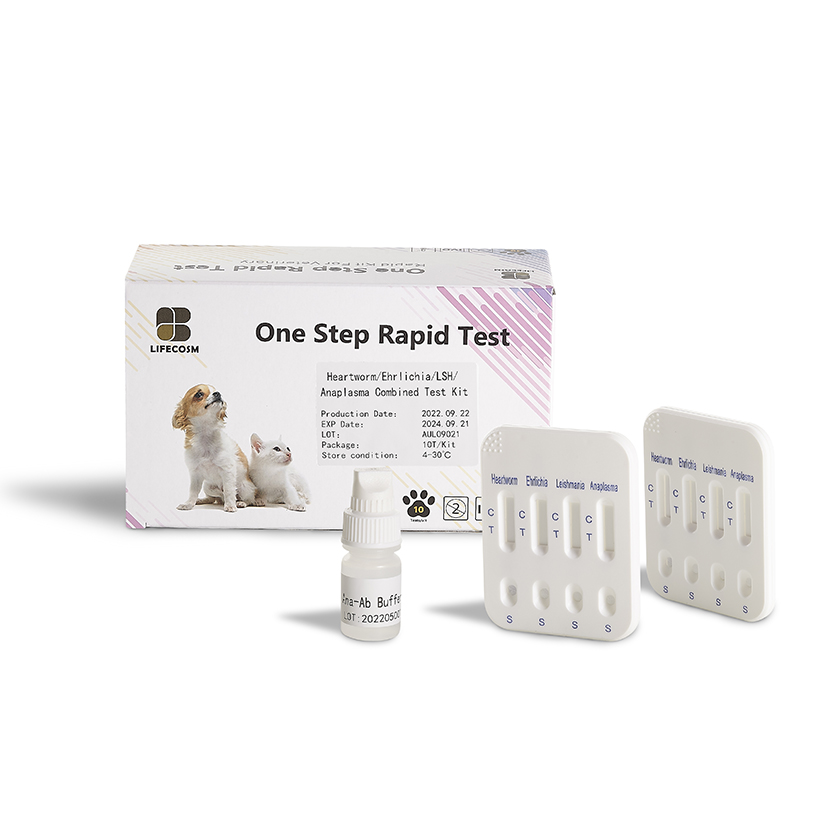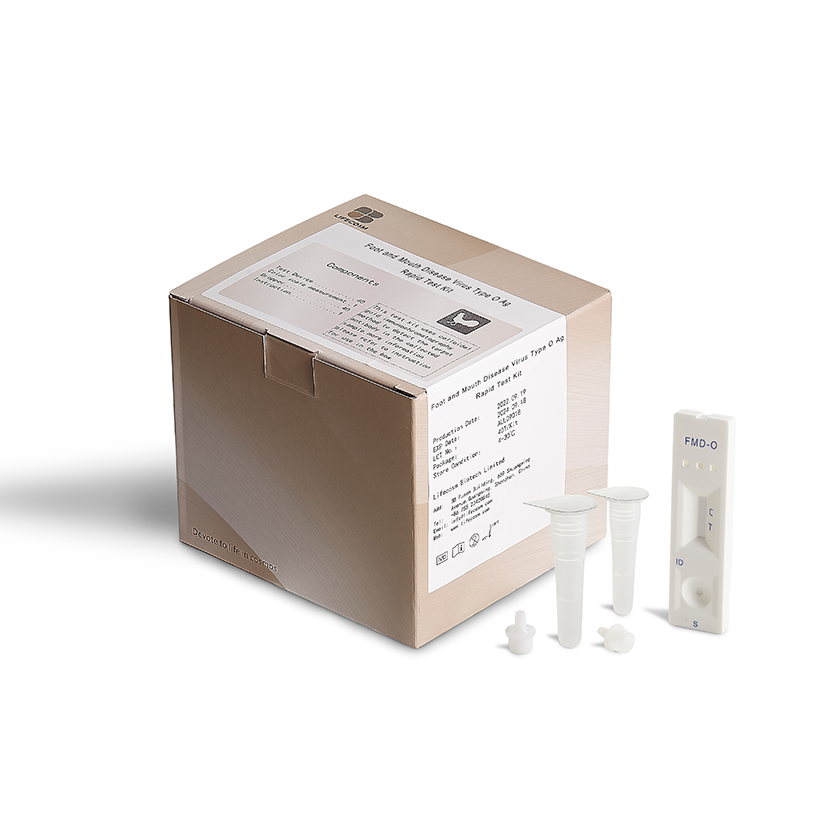
Products
Canine Parvovirus Ag Test Kit
| Summary | Detection of specific antigens of canine parvovirus
within 10 minutes |
| Principle | One-step immunochromatographic assay |
| Detection Targets | Canine Parvovirus (CPV) antigen |
| Sample | Canine Feces |
| Quantity | 1 box (kit) = 10 devices (Individual packing) |
|
Stability and Storage |
1) All reagents should be stored a Room Temperature (at 2 ~ 30℃) 2) 24 months after manufacturing.
|
Information
In 1978 was known a virus which infected dogs regardless of age to damage enteric system, white cells, and cardiac muscles. Later, the virus was defined as canine parvovirus. Since then, the outbreak of the disease has been on the rise worldwide.
The disease is transmitted through direct contacts among dogs, in particular in places like dog training school, animal shelters, playground and park etc.
Even though canine parvovirus does not infect other animals and human beings, dogs can be infected by them. Infection medium is usually the feces and urine of infected dogs.
Serotypes
The CPV Ag Rapid Test kit use chromatographicimmunoassay for the qualitative detection of canineparvo virus antigen in feces, Sample to be tested isloaded to the sample pad, and then capillary flow alongon the test strip, The detection antibody is coupled withcolloidal gold as conjugate will mix with the sample fluid.Where CPV antigen is present, a complex is formed byCPV antigen and colloidal gold labelled antibody. Thelabelled antigen-antibody complex is then bound by asecond 'capture-antibody'that recognizes the complexand which is immobilized as T line on the test strip. Apositive result therefore generates a visible wine-red lineof antigen-antibody complex.A wine-red C line willappear to confirm the test is operated correctly.
Contents
| revolution canine |
| revolution pet med |
| detect test kit |
revolution pet


